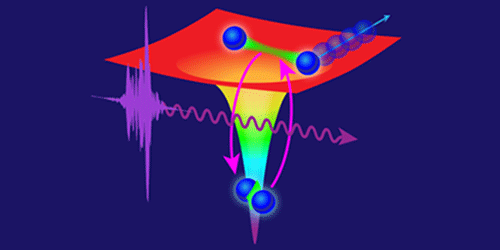Distorting Helium Atoms with XUV Light
Aim a strong enough laser at an atom, and it will distort the atom’s electronic structure. This effect can be useful for probing how light and matter interact on the most fundamental level. Now, researchers have used this laser-mediated distortion to look at how intense XUV light affects the energies and dynamics of excited electron pairs in a helium atom. The results provide a peek into the rapid evolution of this doubly excited state and a window into how external laser fields can alter and control electron pairs in matter.
When helium is zapped with just the right wavelength of XUV light, both of its two electrons jump to an excited state. Within a few dozen femtoseconds, one of the electrons falls back to the ground state while the other escapes. But in that intervening time, the closely held pair makes the atom a natural laboratory for studying electron-electron interactions.
To create such an atomic-sized lab, Christian Ott, of the Max Planck Institute for Nuclear Physics, Germany, and colleagues subjected helium gas to pulses from an XUV laser tuned to trigger the doubly excited transition. By varying the intensity of the laser, the team altered the electromagnetic environment in which the transition occurred. This change shifted the energy levels of the doubly excited state, an effect the team tracked through careful analysis of absorption lines in the laser light.
The team says that the high level of control they demonstrated in their experiments—through selecting a specific atomic state and altering its behavior at will—sets the stage for using external short-wavelength fields to control specific atoms in more complex entities such as molecules and solids.
This research is published in Physical Review Letters.
–Christopher Crockett
Christopher Crockett is a freelance writer based in Arlington, Virginia.





